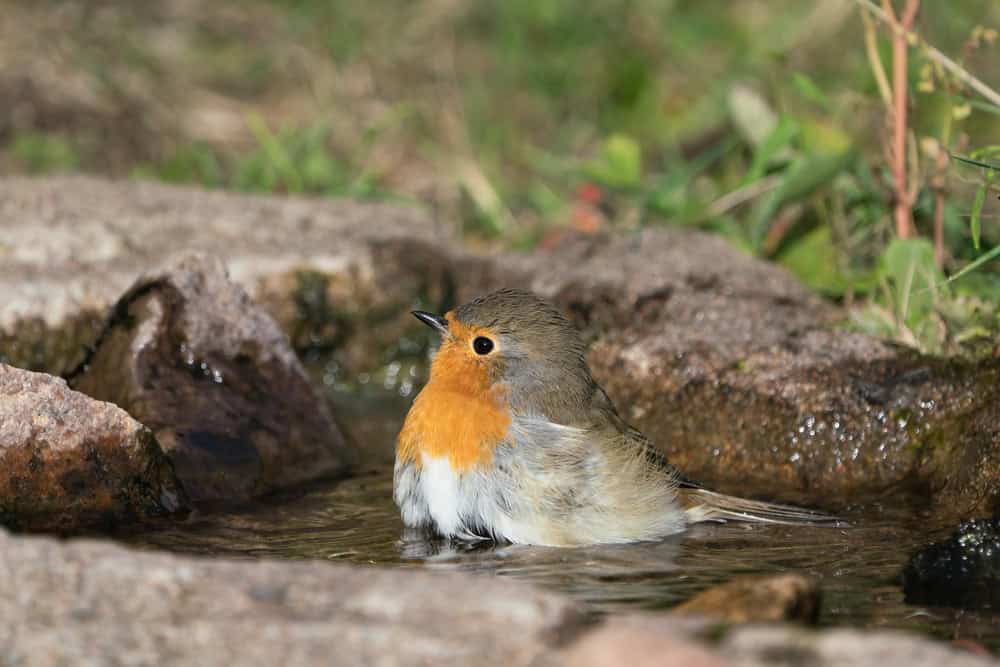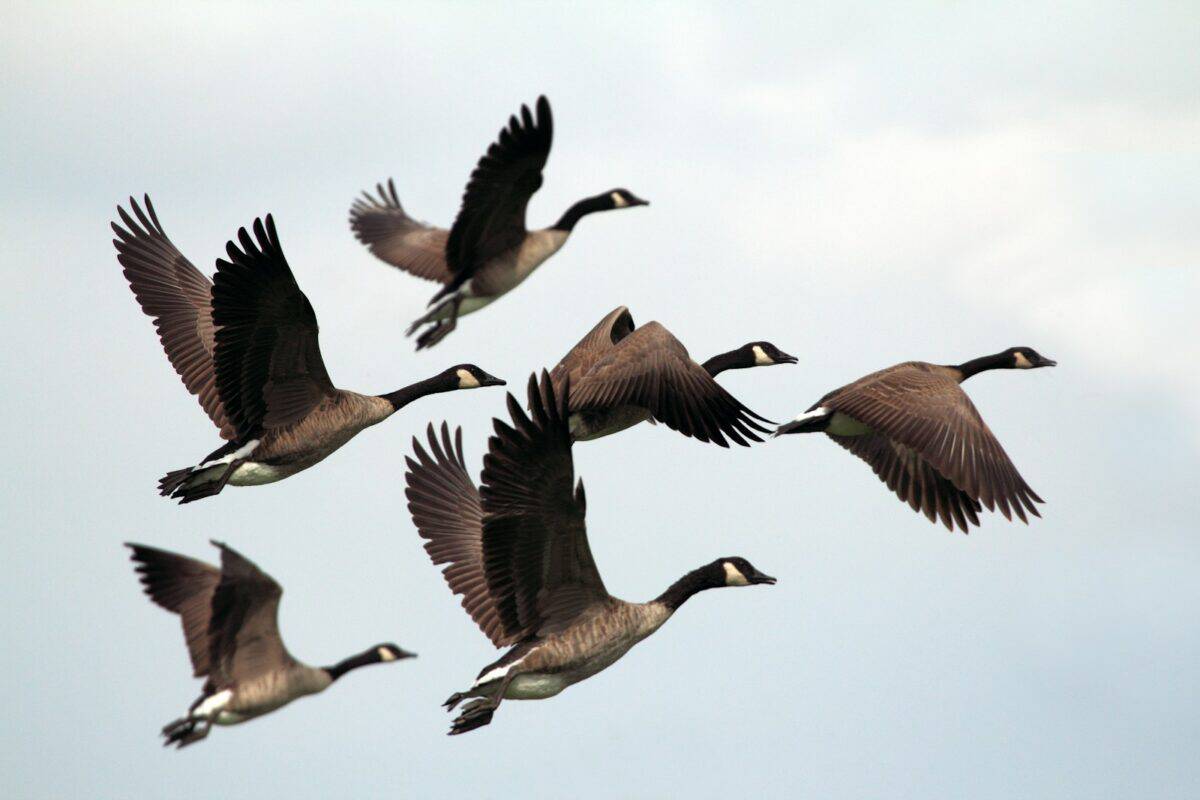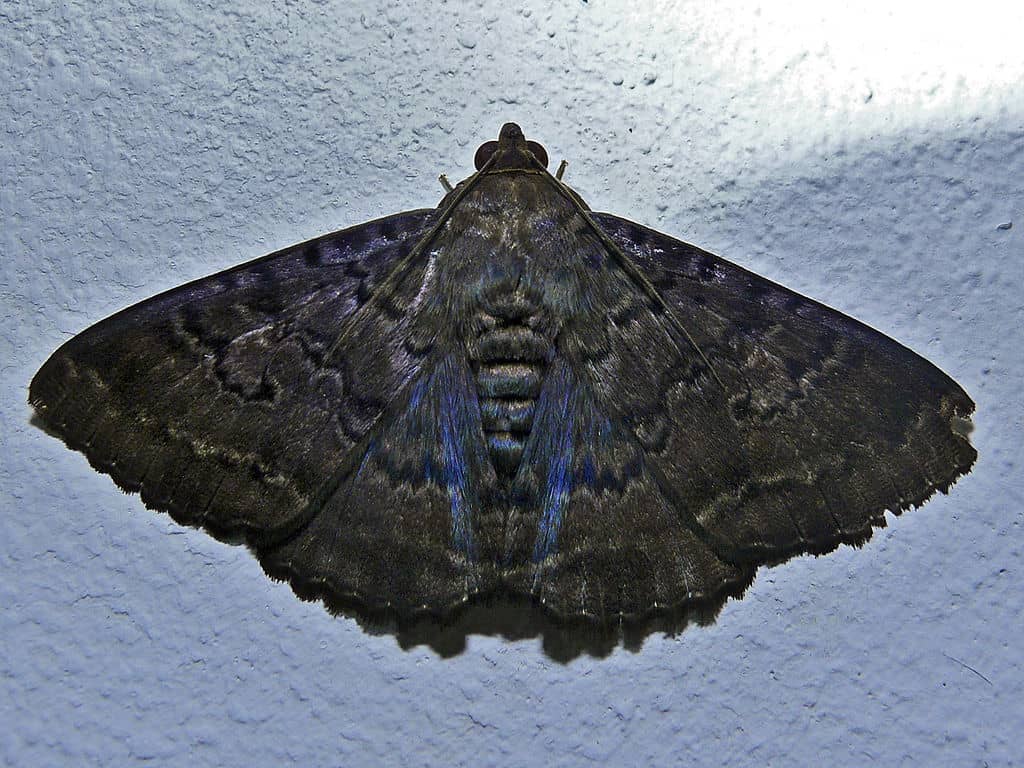The vast expanse of the night sky has served as a celestial roadmap for human travelers for thousands of years. Yet, long before humans learned to chart courses by the stars, many species in the animal kingdom had already mastered this remarkable navigational skill. Star navigation, or celestial orientation, is a sophisticated ability that allows animals to undertake epic migrations, find food, and return to breeding grounds with astonishing precision. These biological compasses, finely tuned through evolution, demonstrate how wildlife has developed ingenious solutions for survival. From the smallest insects to massive marine mammals, these 14 wild animals showcase nature’s remarkable ability to use the cosmos as a guide, revealing the intricate connection between terrestrial life and the universe above.
14. Dung Beetles Night-time Navigators

These industrious insects might seem like unlikely astronomers, but dung beetles have proven to be remarkably adept at using celestial cues. When a dung beetle finds a suitable dung pile, it crafts a ball of excrement and rolls it away in a straight line to avoid competition. Research published in Current Biology revealed that African dung beetles (Scarabaeus satyrus) use the Milky Way’s bright band of light to maintain a straight path during moonless nights. Scientists demonstrated this by placing tiny hats on some beetles to block their view of the sky, resulting in significantly more erratic paths compared to those with an unobstructed view. This discovery made dung beetles the first known insects to orient themselves using the galaxy rather than individual stars, showcasing how even small brains can process complex celestial information.
13. Indigo Buntings Stellar Songbirds

The vibrant blue indigo bunting (Passerina cyanea) uses the night sky as its personal GPS during seasonal migrations between North and Central America. Groundbreaking studies by ornithologist Stephen Emlen in the 1960s demonstrated that these songbirds calibrate their internal compasses using star patterns. By raising buntings in planetariums with manipulated “skies,” Emlen discovered that young birds learn to navigate by observing how stars rotate around the North Star (Polaris). The birds memorize the pattern of stars near the north celestial pole rather than individual stars. This celestial learning occurs during the first summer of their lives, creating a lifelong navigational framework. What makes this ability particularly impressive is that indigo buntings migrate independently rather than in flocks, relying entirely on their star-based navigation system to travel up to 2,000 miles twice yearly.
12. Harbor Seals Marine Stargazers

Harbor seals (Phoca vitulina) might spend much of their time in water, but research suggests they’re keeping an eye on the stars. A study conducted at the Marine Science Center in Cologne, Germany, revealed that these marine mammals can identify star patterns. Scientists trained seals to distinguish between stellar constellations projected onto the dome of a planetarium. Not only could the seals identify specific star formations, but they could also recognize these patterns when viewed from different angles, suggesting a sophisticated three-dimensional understanding of celestial maps. This ability likely helps harbor seals navigate during long-distance ocean journeys, particularly in clear night conditions when they surface to breathe. The discovery adds to growing evidence that marine mammals possess complex cognitive abilities that help them thrive in their aquatic environments while maintaining connections to the sky above.
11. European Robin Magnetic Star Navigators

The European robin (Erithacus rubecula) employs a fascinating dual navigation system that combines stellar cues with Earth’s magnetic field. These small birds undertake seasonal migrations between Northern Europe and the Mediterranean region, navigating with remarkable precision. Research published in Nature has shown that European robins possess specialized proteins in their eyes called cryptochromes that may allow them to literally “see” Earth’s magnetic field as visual patterns. However, studies have demonstrated that these birds calibrate this magnetic compass using star patterns at night. Young robins observe the rotation of stars to establish a reliable reference point for their magnetic sense. This calibration is crucial because magnetic north doesn’t perfectly align with geographic north. The robins’ ability to integrate celestial and magnetic information showcases one of nature’s most sophisticated navigation systems, allowing these small birds to travel hundreds of miles with pinpoint accuracy.
10. Mallard Ducks Celestial Pilots

Mallard ducks (Anas platyrhynchos) employ stellar navigation during their nocturnal migrations, often traveling under the cover of darkness to avoid predators. Research conducted at the University of Frankfurt demonstrated that mallards have the ability to orient themselves using star patterns, particularly on clear nights. In controlled experiments, mallards were placed in planetariums where researchers could manipulate the projected night sky. When shown accurate star patterns, the ducks consistently oriented themselves in the appropriate migratory direction. However, when star positions were altered, the mallards became disoriented. Interestingly, mallards appear to use a combination of navigational tools—incorporating the sun, stars, and Earth’s magnetic field—creating a redundant system that ensures successful migration even when some cues are unavailable due to weather conditions. This multi-faceted approach to navigation helps explain how mallard populations have successfully established themselves across diverse habitats worldwide.
9. Greater White-fronted Geese Nocturnal Navigators

Greater white-fronted geese (Anser albifrons) undertake one of the most impressive migrations in the bird world, traveling from Arctic breeding grounds to wintering areas thousands of miles south. Research using GPS tracking has revealed that these geese frequently fly at night, particularly during full-moon periods when stellar visibility is combined with lunar illumination. Studies conducted by Dutch and German ornithologists have shown that these geese maintain remarkably straight flight paths even during complete darkness, suggesting reliance on celestial navigation. Laboratory experiments confirmed that greater white-fronted geese can identify key star patterns and use them to determine directional information. What makes their navigation particularly impressive is their ability to compensate for the apparent movement of stars throughout the night while maintaining their course. This ability allows the geese to complete non-stop flights covering over 600 miles in a single journey, demonstrating how celestial navigation enables these birds to undertake one of nature’s most demanding migrations.
8. Leatherback Sea Turtles Ancient Mariners

Leatherback sea turtles (Dermochelys coriacea), the largest of all living turtles, navigate vast oceanic distances with remarkable precision, often traveling more than 10,000 miles annually. Research from Florida Atlantic University has demonstrated that these ancient reptiles use multiple navigational cues, including stellar orientation during night journeys. Hatchling turtles emerge from nests predominantly at night and immediately head toward the ocean, guided partly by the reflection of stars and moonlight on water. As adults, leatherbacks continue to rely on celestial information, particularly when migrating across featureless open oceans. Scientists have documented that these turtles surface more frequently on clear nights, possibly to gather navigational data from the stars. This celestial navigation system has remained largely unchanged for over 100 million years, allowing leatherbacks to survive extinction events that eliminated dinosaurs. Their ability to read the night sky helps explain how individual turtles can return to specific nesting beaches with extraordinary accuracy after years at sea.
7. Noctuid Moths Tiny Celestial Navigators

Certain species of noctuid moths demonstrate one of the most remarkable examples of insect celestial navigation during their seasonal migrations. Research published in Current Biology revealed that bogong moths (Agrotis infusa) native to Australia travel over 600 miles each spring to escape the heat, navigating to specific high-altitude caves. Scientists at the University of Lund discovered these moths maintain straight flight paths by using the stars as reference points. Through laboratory experiments manipulating artificial night skies, researchers found that moths became disoriented when star patterns were altered or removed. What makes this navigation system particularly impressive is the moths’ ability to compensate for wind drift using their stellar compass. Like their larger mammalian and avian counterparts, these insects integrate multiple navigational cues, including Earth’s magnetic field and landmark recognition. The fact that an insect with a brain weighing less than a grain of rice can process complex celestial information challenges our understanding of what constitutes intelligence in nature.
6. Humpback Whales Oceanic Star Followers

Humpback whales (Megaptera novaeangliae) undertake some of the longest migrations of any mammal, traveling up to 5,000 miles between feeding and breeding grounds. Recent studies from Duke University Marine Laboratory suggest these massive marine mammals may use the stars to navigate across featureless ocean expanses. Researchers analyzing tracking data noticed that humpbacks maintain extraordinarily straight paths during clear nights but show more deviation during overcast conditions. When whales surface to breathe at night, they have brief opportunities to view the sky, possibly gathering stellar information to calibrate their course. Further evidence comes from the discovery that humpback whales possess magnetite crystals in their brains, potentially allowing them to sense Earth’s magnetic field in conjunction with stellar cues. This dual navigation system would explain how humpbacks consistently return to the same breeding lagoons year after year with remarkable precision. The ability to read both the ocean’s magnetic signatures and the night sky showcases the sophisticated spatial awareness of these intelligent marine mammals.
5. African Dung Beetles Celestial Rollers

While mentioned earlier, African dung beetles deserve deeper examination as their celestial navigation abilities differ significantly between species. The nocturnal Scarabaeus satyrus navigates using the Milky Way, but researchers at Lund University discovered that its relative, Scarabaeus zambesianus, relies on individual stars rather than the galactic band. This beetle uses bright stars as reference points to maintain straight paths while rolling dung balls. Experiments conducted in South Africa’s Kalahari Desert demonstrated that these beetles can even calibrate their course using artificial celestial cues. By placing beetles in arenas with controlled light sources mimicking stars, scientists observed that the insects adjusted their orientation according to these artificial reference points. What makes this ability particularly remarkable is that dung beetles have compound eyes with relatively poor resolution, yet they can still distinguish celestial points of light. Their navigation system appears to be innate rather than learned, suggesting that the ability to use stars as directional guides is hardwired into their nervous systems through millions of years of evolution.
4. White-throated Sparrows Celestial Songsters

White-throated sparrows (Zonotrichia albicollis) undertake biannual migrations across North America, traveling between Canadian breeding grounds and southern wintering territories. Research at Cornell University’s Lab of Ornithology has revealed these sparrows possess a sophisticated star navigation system that functions alongside their sun compass and magnetic sense. Using advanced tracking technology and controlled planetarium studies, scientists discovered that white-throated sparrows can identify the north celestial pole by observing star rotation patterns. What makes their navigation particularly interesting is how these birds adapt to different celestial views as they migrate. As they travel south, the night sky appears increasingly different, yet they maintain accurate headings by continuously updating their stellar map. Even more remarkably, researchers found that captive sparrows denied access to the night sky during development could still navigate using stars when later exposed to them, suggesting some aspects of celestial navigation may be innate rather than entirely learned. This adaptability helps explain why white-throated sparrows have maintained stable migration routes despite changing environmental conditions over centuries.
3. Elephant Seals Deep Divers with Celestial Knowledge

Northern elephant seals (Mirounga angustirostris) undertake one of the most impressive marine migrations, traveling up to 13,000 miles annually between breeding beaches and feeding grounds in the North Pacific. Tracking studies from the University of California Santa Cruz have revealed these massive mammals navigate with extraordinary precision across featureless ocean expanses. While elephant seals spend most of their time underwater, diving to depths exceeding 5,000 feet, they regularly surface to breathe, particularly at night. These brief surfacing periods provide opportunities to gather stellar information. Research has demonstrated correlations between clearer night skies and straighter migration paths in tracked seals. Laboratory studies with captive elephant seals have further shown they can recognize star patterns projected onto planetarium domes. What makes their navigation particularly impressive is their ability to integrate celestial cues with other sensory information, including geomagnetic fields and ocean currents. This multi-sensory approach allows elephant seals to follow remarkably consistent migration routes year after year, often returning to the exact same beach where they were born despite spending months traversing thousands of miles of open ocean.
2. Band-tailed Pigeons Star-tracking Columbiforms

Band-tailed pigeons (Patagioenas fasciata), close relatives of the common pigeon, demonstrate remarkable celestial navigation abilities during their seasonal movements along the Pacific coast of North America. Research conducted by the U.S. Geological Survey has revealed these pigeons use star patterns to orient themselves during nocturnal migration flights. Unlike some birds that learn stellar navigation, band-tailed pigeons appear to possess an innate ability to recognize key star patterns, particularly those surrounding the north celestial pole. Controlled experiments have shown that even hand-raised pigeons with no previous experience of the night sky can orient themselves correctly when exposed to accurate star patterns. What makes their navigation system particularly interesting is how it complements their already impressive homing abilities. Band-tailed pigeons integrate stellar information with their sensitivity to Earth’s magnetic field and their visual memory of landscape features, creating a redundant navigation system that functions in virtually any conditions. This sophisticated orientation ability explains how these birds can reliably locate seasonal food sources that may be hundreds of miles apart, including specific groves of oak trees bearing acorns that constitute a crucial food source.
1. Monarch Butterflies Stellar Lepidopterans

The monarch butterfly (Danaus plexippus) undertakes one of the most spectacular insect migrations, with some individuals traveling over 3,000 miles from Canada to central Mexican highlands. While researchers have long known that monarchs use the sun as a primary compass, recent studies from the University of Massachusetts have discovered they also navigate using stars during nocturnal flight segments. Using flight simulators with projected night skies, scientists observed that monarchs maintained consistent directional preferences when exposed to accurate star patterns but became disoriented when shown scrambled celestial arrangements. What makes this ability particularly remarkable is that monarchs accomplish this navigational feat with a brain weighing less than 0.5 milligrams. Additionally, the butterflies that migrate to Mexico are several generations removed from those that made the previous year’s journey, indicating that stellar navigation must be genetically programmed rather than learned. This celestial guidance system works in conjunction with the butterflies’ ability to sense Earth’s magnetic field and their biological clock, creating an integrated navigation package that guides these fragile insects on one of nature’s most extraordinary migrations across an entire continent.
Conclusion: The Celestial Connection How Wildlife Reads the Night Sky

The remarkable ability of these 14 species to navigate by the stars demonstrates how deeply connected wildlife is to cosmic phenomena. From tiny insects to massive whales, animals have evolved sophisticated abilities to process celestial information, often exceeding what humans can perceive without technological assistance. This connection between terrestrial life and the cosmos reminds us that ecosystems extend beyond Earth’s physical boundaries to include the patterns of stars that have guided animal movements for millions of years. As light pollution increasingly obscures our view of the night sky, many of these star-navigating species face new challenges that evolution hasn’t prepared them for. Understanding and preserving dark skies isn’t just about human appreciation of the stars but about maintaining critical navigational infrastructure for countless species. The celestial maps these animals read represent one of nature’s most elegant solutions to the fundamental challenge of finding one’s way in the world—a reminder that even the most distant stars play a vital role in Earth’s biodiversity.
- 14 Wild Animals That Navigate Using the Stars - August 12, 2025
- 14 Things Only Ferret Owners Will Understand - August 12, 2025
- 15 Strange Animal Behaviors Scientists Cannot Fully Explain - August 12, 2025

